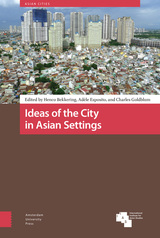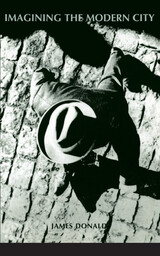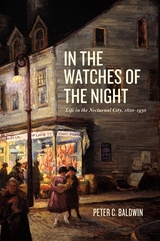Imagining The Modern City
James Donald
University of Minnesota Press, 1999
An engaging look at the cultural legacy of the twentieth-century city and how it affects our ideas of community and democracy.
Paris, Berlin, London, Singapore, New York, Chicago, Los Angeles--these define "the city" in the world's consciousness. James Donald takes us on a psychic journey to these places that have inspired artists, writers, architects, and filmmakers for centuries. Considering the cultural and political implications of the "urban imaginary," Donald explores the pleasures and challenges of modern living, contending that the imagined city remains the best lens for a future of democratic community.
How can we think of Chicago without recalling the grittiness of The Asphalt Jungle's back alleys, or of London without the dank, foggy atmosphere so often evoked by Dickens? When de Certeau explores what it means to walk through a city, or Foucault dissects the elements of the modern attitude, what are they telling us about modernity itself? Through a discussion of these and many other questions about urban thought, Donald demonstrates how artists and social critics have seen the city as the locus not just of vanity, squalor, and injustice, but also of civilized society's highest aspirations.
Imagining the Modern City also looks at how artists have shaped cities through their creation of public spaces, sculpture, and architecture--art forms that help determine our ideas about our place in the urban environment. Planners and architects such as Otto Wagner, Le Corbusier, and Bernard Tschumi present us with real and possible cities, showing a way forward to alternative social futures, Donald asserts.
The modern city provides both a culturally resonant imagined space and a physical place for the everyday life of its residents. Imagining the Modern City is a rich and dazzling exploration of the ways cities stir and shape our consciousness.
"In Imagining the Modern City, Donald, a British professor of communications and cultural studies based in Australia, seeks to explain the uneasy interaction between city and citizen by drawing together literary, cinematic, architectural, and sociological evocations of the metropolis from the past two centuries. He begins with the stratified geography of Dickens' London, in which neighborhood determined social position, then moves on to Baudelaire's changing Paris, the German-Jewish sociologist Georg Simmel's imperial Berlin, the seedy Chicago of The Asphalt Jungle, Joyce's Dublin, and finally, the hallucinatory visions of Fritz Lang's Metropolis, Tim Burton's Gotham City, and modern-day Singapore. Donald believes that all of these cities are not so much physical places as constructs of media and mind." Liesl Schillinger in Metropolis
"Donald's fluid writing weaves familiar scholarly territory into a warm and inviting narrative that reflects his own passion for the city. A most important contribution, the sort that ends in a question mark rather than a period." Environment and Planning D: Society and Space
"Cities are back in fashion, at least in theory. Imagining the Modern City juxtaposes imagination an politics, the city and modernity. The panache of Donald's writing and his integration of biography and fiction, visual images and critical reflection on the vast array of popular cultural versions of the modern city make Imagining the Modern City both page turning and illuminating. A quirky and personable style combined with a judicious use of photos, drawings, and films adds interest and critical insight." Thesis Eleven
"A stimulating and engaging meditation on the city and the urban imaginary that explores both the pleasures and the challenges of modern living. Donald uses the culture of cities to open up important questions about modernity and, particularly, modern political culture." Kevin Robins
"The city tugs at the imagination and the imagination tugs the city. In an exemplary fashion, Donald shows the truth of this statement. An acute and often surprising book that shows real sympathy for the city, warts and all." Nigel Thrift
"To dare to rewrite the political map of the city as a poetic one, as Donald does, is to insist that this other, imaginative side of the metropolis is as important to how we live the city, walk its streets and dream our selves, as are the political expectancies we think it embodies."
Iain Chambers
James Donald is professor of communications and cultural studies at Curtin University of Technology in Perth, Australia.
[more]












